Area and Perimeter of Polygon Calculator
Polygon Name, Edges, Angle, Area & Perimeter - work with steps
Input Data :
Number of sides n = 5
Side length l = 10
Objective :
Find what is the interior angle, exterior angle, area & perimeter of the polygon?
Solution :
Interior Angle = (n - 2) x 180n
= (5 - 2) x 1805
= 3 x 1805
= 5405
Interior Angle = 108
Sum of Interior Angle = (n - 2) x 180
= (5 - 2) x 180
= (3) x 180
Sum of Interior Angle = 540
Exterior Angle = 360n
= 3605
Exterior Angle = 72
Perimeter = Side x Side Length
= 5 x 10
Perimeter = 50
Area = Side Length x (Perimeter/2)2 tan(180/n)
= 10 x (50/2)2 tan (180/5)
= 10 x 252 tan (36)
= 2502 x 0.7265
= 2501.4531
Area = 172.0477
Area and perimeter of polygon calculator uses two parameters, number of sides and side length of a regular polygon, and calculates the sum of interior angles, measures of interior and exterior angles, perimeter and area of the polygon.
It is an online Geometry tool requires number of sides and side length of a regular polygon. Using this polygon calculator, we will understand methods of how to find the sum of interior angles, measures of interior and exterior angles, perimeter and area of any regular polygon.
It is necessary to follow the next steps:
- Enter the number of sides and the side length of a regular polygon in the box. The number of sides must be an integer, while the value of side length of a regular polygon must be positive real number or parameter. Note that the length of a segment is always positive;
- Press the "GENERATE WORK" button to make the computation;
- Area and perimeter of any polygon calculator will give the sum of interior angles, measures of interior and exterior angles, perimeter and area of the polygon.
Output: Five positive real numbers or variables as the sum of interior angles, measures of interior and exterior angles, perimeter and area of a regular polygon and corresponding units after that.
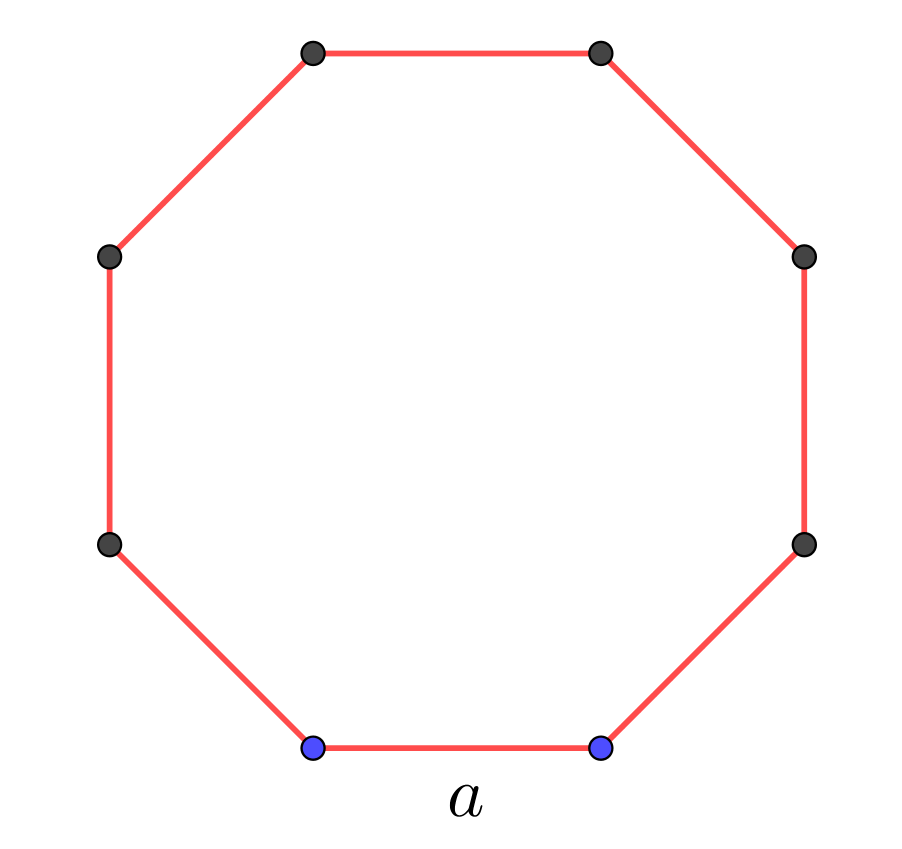
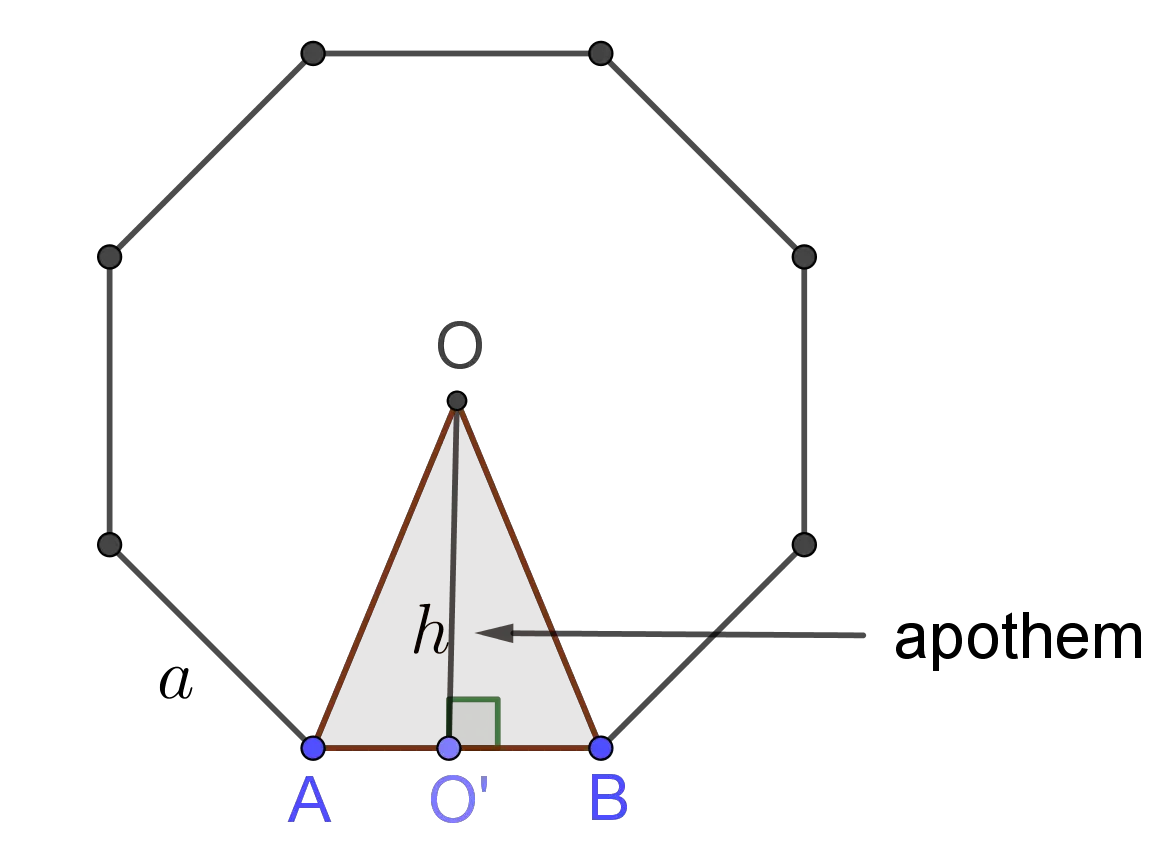
The perimeter, $P$, of a regular polygon is determined by the formula
Apothem of Regular Polygon Formula:
The apothem, $h$, of the regular polygon is determined by the formula
Area of Regular Polygon Formula:
The area, $A$, of a regular polygon is determined by the formula
Area of Regular Polygon Formula:
The area, $A$, of a regular polygon is determined by the formula
What is Area & Perimeter of Polygon?
A closed figure bounded by line segments is the polygon. These segments are called its edges or sides, and the points where two sides meet are the polygon's vertices.
For instance, in the following table are given some well-known polygons:
| 3 | Triangle |
| 4 | Quadrilateral |
| 5 | Pentagon |
| 6 | Hexagon |
| 7 | Heptagon |
| 8 | Octagon |
| 9 | Nonagon |
| 10 | Decagon |
| 12 | Dodecagon |
| n | n-gon |
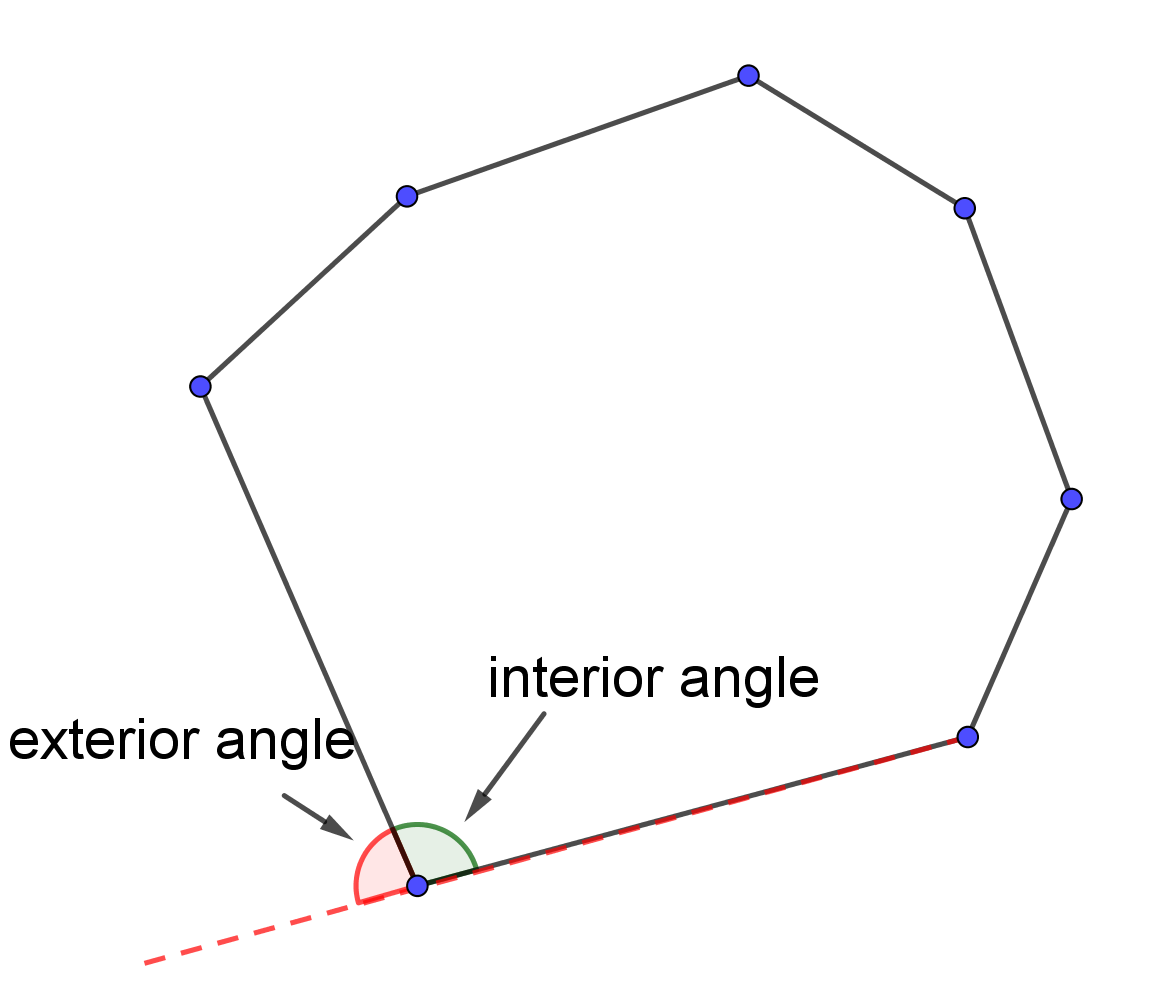
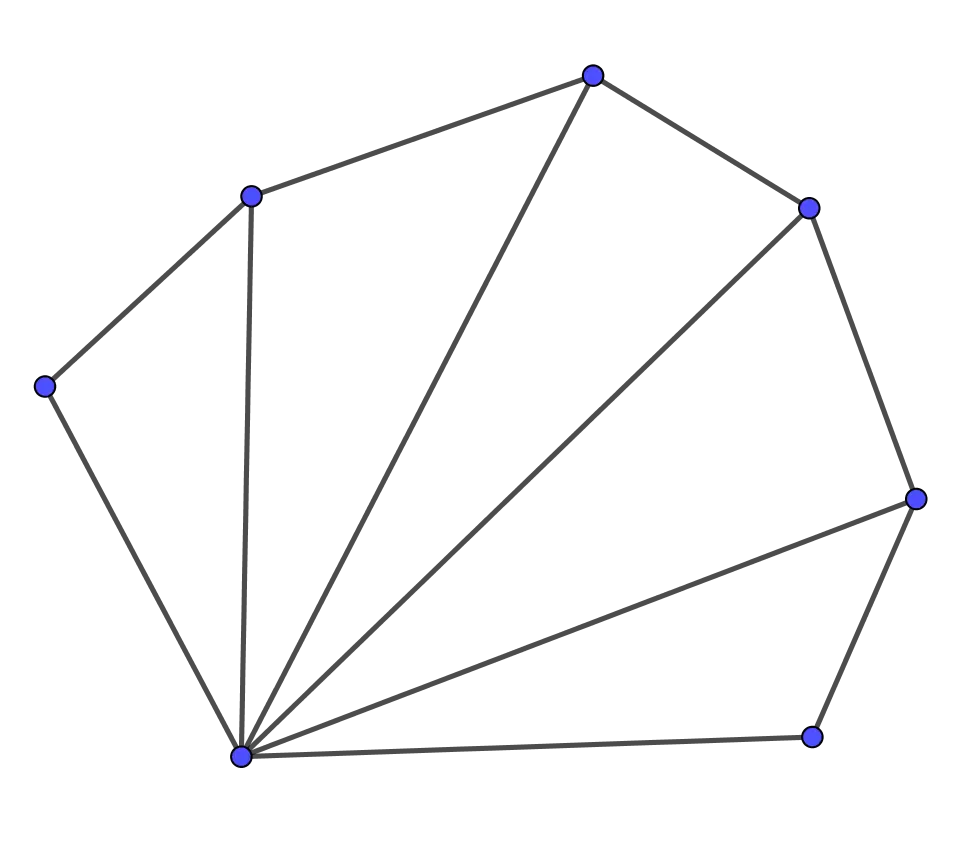
A polygon is a regular polygon if all its sides are congruent and all its angles are congruent. This means a regular polygon is a polygon that is both equiangular and equilateral. Equiangular polygon has all angles equal in measure, while equilateral polygon has all congruent sides. In the picture below are represented: equilateral triangle, square, regular pentagon, regular hexagon, respectively.

- Any regular polygon can be inscribed in a circle. The circumcircle of a polygon is a circle that passes through all the vertices of the polygon. The center of this circle is called the circumcenter;
- Any regular polygon can be circumscribed in a circle. This means that any regular polygon has a incircle that is tangent to each side of the polygon at the midpoint;
- A regular polygon can be constructed with compass and straightedge if and only if the odd prime factors of the number of sides are distinct Fermat primes. For instance, a regular pentagon can be constructed with compass and straightedge while a regular heptagon cannot be constructed with straightedge and compass;
- Any regular polygon has rotational symmetry. Rotating a regular $n$-gon by a multiple of $\frac {360^o}n$ transforms the $n$-gon onto itself. For example, a regular octagon can be transformed onto itself by a clockwise or counterclockwise rotation of $45^o, 90^o, 135^o, 180^o,225^o, 270^o$, or $315^o$ about its circumcenter $O$.



Since the central angle of a regular polygon is $\frac {360^o}n$, from the right triangle $\Delta OO'B$, the apothem can be calculated by the formula
For example, let us find the sum of interior angles, measures of interior and exterior angles, perimeter and area of a regular pentagon with the side length of $10$. The sum of interior angles of a pentagon is
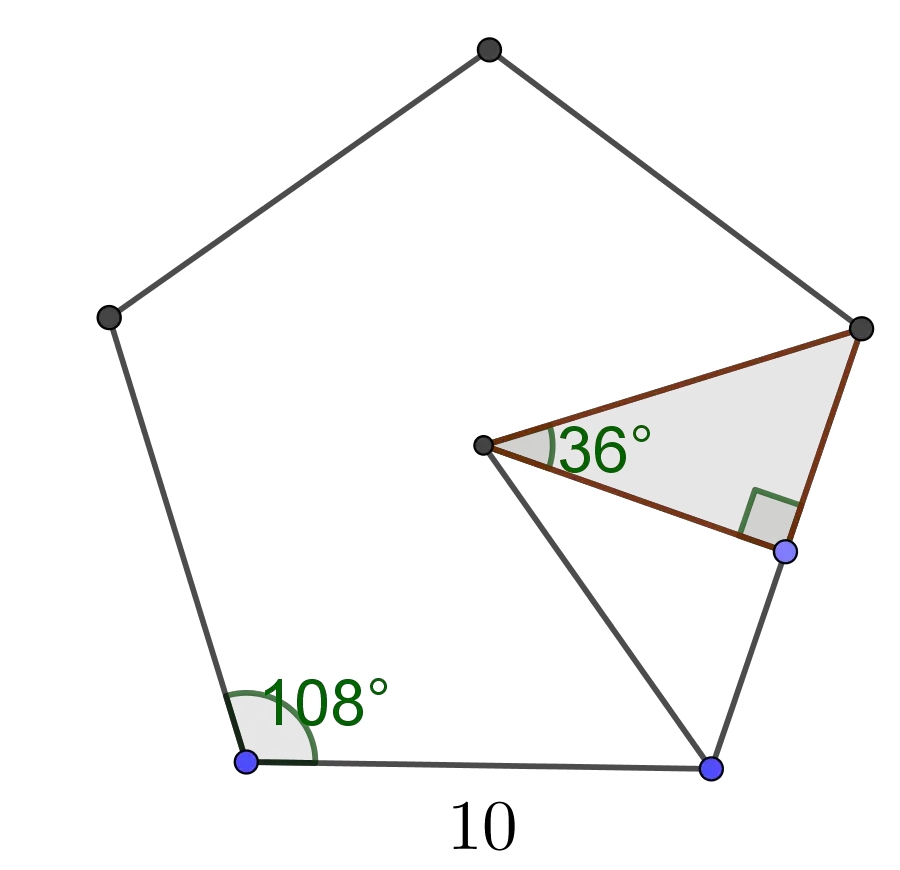
Real World Problems Using Area & Perimeter of a Regular Polygon
Calculating areas and perimeters of regular polygons play an important role in almost all field of science and real life. A polyhedron is a solid whose surface consists of a number of polygonal faces. A polyhedron is regular if all its faces are congruent regular polygons and the same number of faces meet at every vertex. There are five convex regular polyhedra, known as the \underline{Platonic solids}: tetrahedron, cube, octahedron and dodecahedron, icosahedron. The surface area and volume of a regular polyhedron contain the formula for the area of regular polygon.
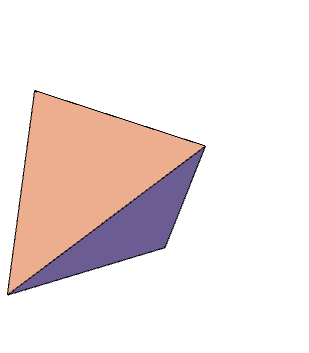
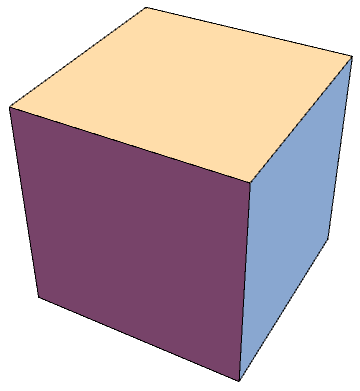
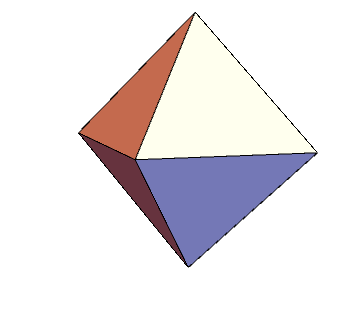
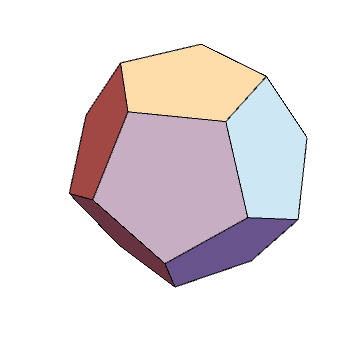
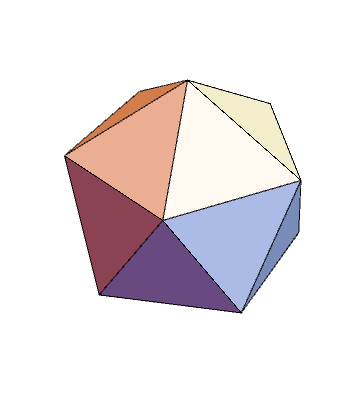
Polygon Practice Problems
Practice Problem 1:
Find the area of regular dodecagon with lengths of sides and apothem of $14$ and $35$, respectively.
Practice Problem 2:
Find the number of sides and the measure of interior angles of a regular polygon if the measure of its exterior angle is $36^o$.
The polygon calculator, formula, example calculation (work with steps), real world problems and practice problems would be very useful for grade school students (K-12 education) to understand the concept of perimeter and area of regular polygons. This concept can be of significance in geometry, to find the area and volume of some solids. Real life problems on regular polygons involving side length, measures of angles, apothem length, area, and perimeter are very common so these formulas can be of great the importance of solving.

